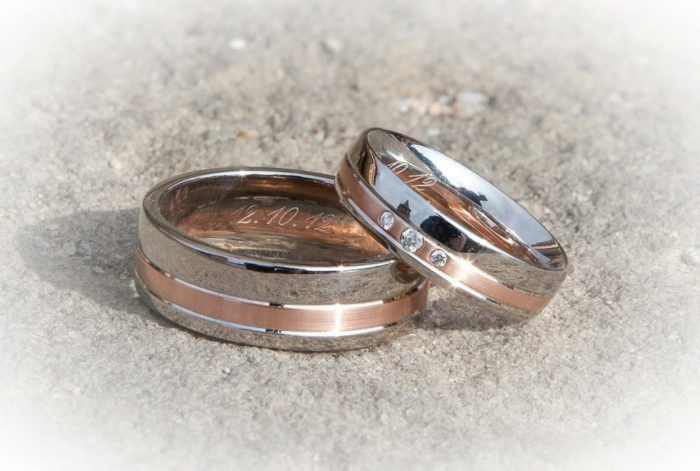Choosing a wedding band for your significant other is not something that should be rushed into, as they will be wearing that piece to signify your love for each other for years to come. On the other hand, for most people it seems to be a rather cut and dry process – you see one you like at the jeweler and you buy it, no complex comparisons involved. While there is no right or wrong approach, it is advisable to at least conduct a basic comparison and learn about your options before making a purchase. With that said, here’s a 4-step guide you can use to make an informed decision:
1. Set a Budget
As obvious as it may seem, this should always be the first step in any purchase comparison, as it will help you decide which ring types to consider before comparing the other aspects mentioned below. Don’t make the mistake of getting excited about a specific type of ring only to find out it’s outside of your price range. Click here and scroll down to see examples of common price ranges from a popular jeweler in the Atlanta area.
2. Choose a Precious Metal Type
By far the most important feature of a wedding band is the metal it’s made of. The main choices include:
- Platinum
- Palladium
- Platina 4 (P4)
- White gold
- Yellow gold
- Rose gold
- Stainless Steel
- Vitalium
- Silver
- Titanium
- Tungsten
- Cobalt
- Black Ceramic
Of these metals, cobalt, titanium, and tungsten have the strongest surface strength, but they’re also the least valuable intrinsically and they have the lowest purity. Platinum is the most well-rounded and is considered the most precious, but it is also the most expensive. Each metal has its own strengths and weaknesses, so it’s important to compare the most popular wedding band metals to determine which would be most suitable for your partner.
3. Consider Scratch Resistance and Surface Strength
Of all the factors that matter the most when choosing a wedding band, scratch resistance and surface strength are two of the most important when it comes to durability. Unfortunately, platinum, palladium, white gold, and yellow gold have an average surface strength. Even so platinum is known to have the longest lifespan out of all the precious metals. While this might not be much of a factor depending on your partner’s preferences and typical daily activities, if your fiancé is a gardener you certainly don’t want to get them a ring that will be scuffed up in no time.
4. Compare Weight and Resizability
The weight of the metal will play a huge role in how the ring feels on the finger. Platinum is about 60% heavier than 14 karat gold, which of course adds a significant heftiness to the fit. However, platinum’s density and weight are also the factors that make it so durable, so it is a bit of a tradeoff considering this metal is also often known as the rich man’s gold due to its rarity. It’s also a good idea to consider whether the metal is resizable. Gold, silver, platinum, palladium, and P4 are some of the resizable metals.
Spoil the Surprise, A Little Bit
Asking your spouse-to-be questions like: “what is your favorite precious metal” or “what wedding ring style do you like the most” might give away some of the surprise element, but it will at least ensure you’re picking a wedding band that will be an instant favorite. It’s also a good conversational piece and can make for a fun window shopping outing at a local jewelry store or a browsing session on online catalogs.


